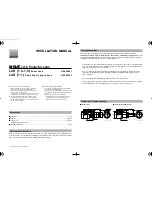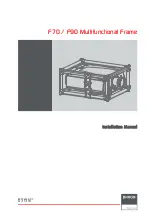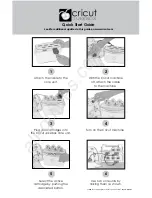
FRANÇAIS
ENGLISH
10
11
Navigation areas & local regulations
Foiling is normally practiced outside of the 300
m area and within one nautical mile from a safe
shore. When practiced within the 300 m area foiling
should be performed with care and with a maxi-
mum speed of 5 kts unless specifically authorised
by the authorities.
Foiling is forbidden within the swimming areas and
more generally in any area dedicated to a specific
activity. Get some information from the local club,
authorities or from other users on the specific local
regulations.
What are the forecasts for wind and waves for the
day? You need to know how the strength and direc-
tion of the wind and waves will evolve along the day.
Check on the tide schedules and on the areas of rip
and strong currents.
When using a kite or another wind propelled device,
the foil can let you ride in marginal conditions. Keep
in mind the wind can quickly die completely. Do not
go out on the water during thunder and lightning.
Help out others
Always keep an eye on your surroundings, and pay
attention to others. Do not hesitate to help out or go
after a struggling kitesurfer.
Respect bystanders
Do not lend your equipment to somebody that has
never practiced before. When using a kite, inform the
spectators of the potential risk of staying downwind
from a kitesurfer.
RULE N°4 - CHECK THE WEATHER CONDITIONS
RULE N°5 - RESPECT & HELP OUT OTHERS
WARNING
Product presenting sharp areas - Risk of injuries
Protection helmet and impact vest are strongly
recommended during use.
When falling, the board and foil can keep their pace
for some time before stopping. Beware of impacts.
The board and foil can drift away at higher speed
than a normal single board. Do not leave your foil
unattended in the water for too long or it could
drift far away from you rapidly.
The foil modifies the weight and size of the board.
When immerged, the foil generates more force op-
posing the drifting force of the kite. The board does
not slide on the water the same way as a single
board. Handling movements should be soft and
controlled. Beware any hasty or abrupt movement.
Using a hydrofoil involves inherent risks and can
cause severe injuries or, sometimes fatal, acci-
dents if misused. F-ONE therefore strongly recom-
mends to follow lessons in a specialized school
before using a hydrofoil for the first time.
To find your nearest school, please check our web-
site at:
www.f-one.world/dealers/
When using a hydrofoil, you agree to take full res-
ponsability for your safety and those of others, which
inculdes informing sebsequent users/owners of your
equipment of the risks and responsabilities involved.
before practicing, make sure that you are properly
convered by an insurrance for any damage or in-
juries caused to third parties while practicing your
sport. Please refer to your sporting federation to get
more information on insurrance and responsabilities.
READ CAREFULLY THIS MANUAL BEFORE USING YOUR KITE AND KEEP IT
STORED FOR FUTURE READING
Specialized equipment contributes to your own safety but do not exempt from constant care and caution.
Please keep in mind that wind and weather can be unpredictable and that no-one can be in full control of the
hydrofoil all the time.
You should never go riding alone. It is strongly recommended to practice in the company of other users who
could eventually call for assistance or help in case of emergency.
Helmet
It is strongly recommended to wear a helmet to protect you in case of a fall or any other unexpected situation.
Wetsuit
Choose a full-length wetsuit (water T° <19°C) or a shorty (water T°>19°C) depending on the water temperature.
Be aware that you will use more energy when you are cold.
Impact vest
The impact vest can help your evolution when being in the water. It might also be welcome when falling gard
and will become your new bast-mate if you ever have to swim back to shore
A FEW SAFETY TIPS TO KNOW AND FOLLOW
Observe local laws and regulations regarding kitesurf and the usage area.
Choose your spot according to your level
The choice of a good spot is a prerogative for a safe learning. The best spot is not necessarily the place where
you find the most riders/users. Choose a place where you can learn safely without having to constantly adapt
to other people around you. It is important to choose a place adapted to foiling, favor a place that isn’t choppy
or turbulent, with enough water depth and without reefs or shoals.
Wind direction
Beware from offshore winds if you have no assistance. In these conditions it is more difficult to swim back to
shore because of the wind and current pushing away from the beach. More generally, you need to anticipate
the effect of the wind and tide/current which can make you drift away, towards or along the shore.
RULE N°1
- YOUR OWN SAFETY
RULE N°2
- GET SET UP
RULE N°3
- CHOOSE YOUR PRACTICE SPOT
SAFETY



























